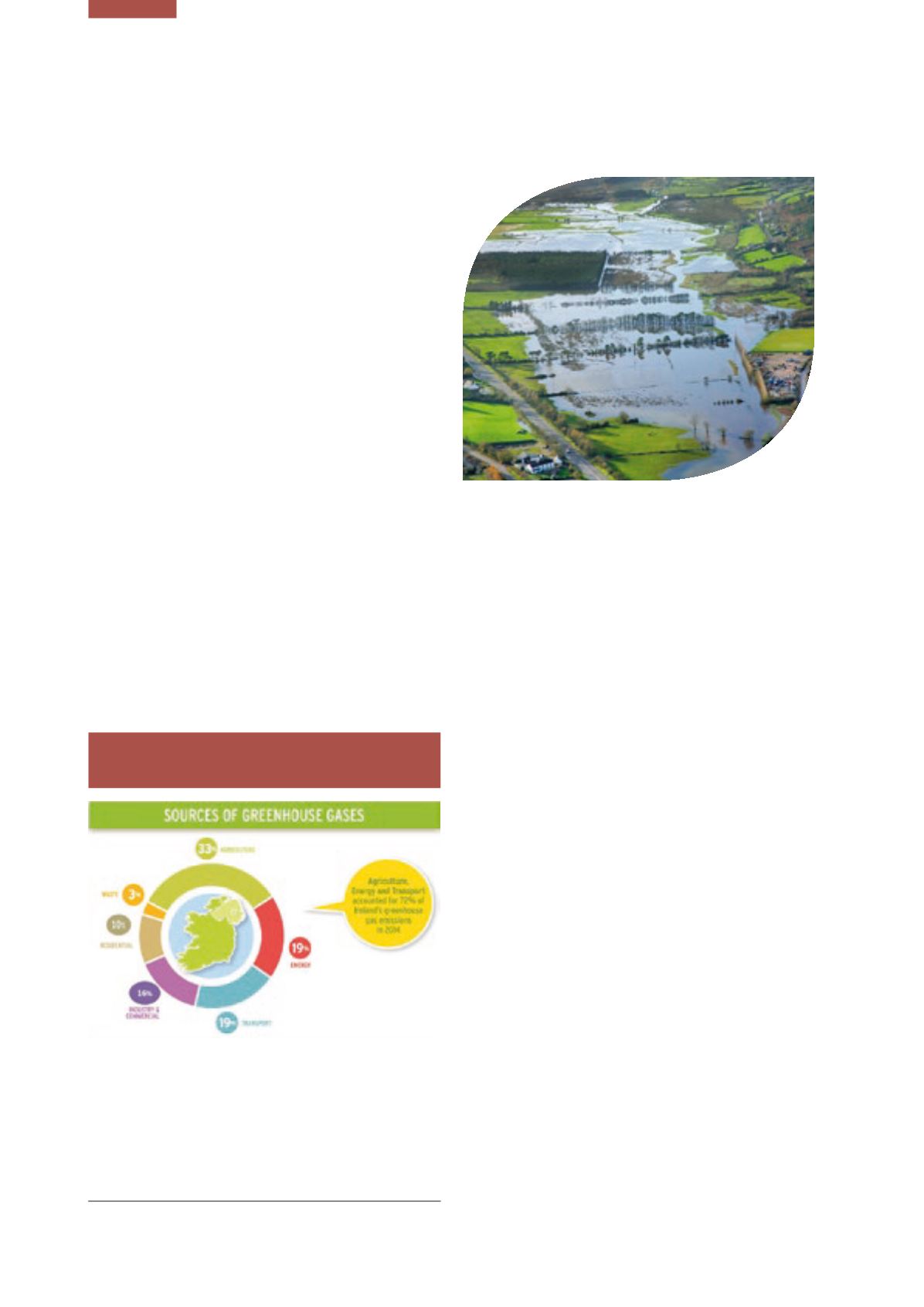

Ireland’s Environment – An Assessment 2016
214
Transition to a Low-Carbon Future
There is a pressing need to develop, implement
and monitor progress on measures to reduce GHG
emissions and deliver resource efficiency.
The national policy position for Climate Change establishes
a vision for Ireland of low-carbon transition based on an
aggregate reduction in carbon dioxide (CO
2
) emissions of
at least 80% (compared with 1990 levels) by 2050 across
the electricity generation, built environment and transport
sectors; and, in parallel, an approach to carbon neutrality
in the agriculture and land use sectors, including forestry,
that does not compromise capacity for sustainable food
production (Irl Gov, 2014).
Ambitious GHG mitigation plans with clear short‑term
and longer-term targets are needed in the key socio-
economic areas of energy, transport, buildings,
manufacturing, services and agriculture to get Ireland
on a clearly defined road to a low-carbon and resource-
efficient future (Figure 13.2). The Climate Action and Low
Carbon Development Act 2015 sets out the legislative
basis and timelines for the making of national and
sectoral mitigation plans as well as a National Adaptation
Framework plan, with the overall aim of reducing our GHG
emissions and moving towards a low-carbon and climate-
resilient future (Irl Gov, 2015). A key task will be to ensure
that robust and transparent monitoring systems are in
place to provide the evidence to track progress to targets
that have been set across different sectors.
Figure 13.2
Ireland’s Sources of Greenhouse Gas
Emissions in 2014
3
(Source: EPA)
However, a paradigm shift across society and the economy
is needed if Ireland is to successfully transition to a
carbon-neutral future in line with the policy ambition.
The emission reductions have to come from a broad base
that includes all sectors.
3 Based on National Sectoral Analysis
The most recent GHG emissions data for the Emissions
Trading Sector were released in early 2016 (EPA, 2016d).
The figures show that the Emissions Trading sector
increased its emissions. This increasing trend does not
look encouraging for meeting our national goal to
transition to a carbon neutral society and economy.
There is a need for stronger incentives to move away
from burning fossil fuels and in particular our ongoing
use of coal and peat to generate electricity. For wider
sectors of the economy and society not covered by
the ETS, which includes transport, agriculture, waste
and residential sectors, for the period 2014-2020
GHG emissions are projected to increase (EPA, 2016b).
Agriculture emissions are projected to increase by 6-7%
and transport is projected to increase by 10-16% on
2014 levels. Overall, total emissions are projected to be
between 6-11% below 2005 levels in 2020. The target is
a 20% reduction.
If Ireland takes a business as usual approach and does
not introduce new policy measures to speed up progress
to move away from fossil fuel we will end up having
to concentrate effort over a short timeframe to meet
targets which will be inefficient and high risk. In effect,
Ireland will need to reduce its GHG emissions to near
zero before the end of this century.
There is embodied carbon in all our production and
consumption cycles, specifically in relation to raw material
use. The significant levels of disposal income as well as
the construction boom up to 2007 put Ireland in the
bracket of being amongst the most resource inefficient
people in Europe (GDP per tonne of Domestic Material
Consumption). The last 5 years has seen a significant
improvement in resource productivity, the challenge is
to ensure that the current economic recovery does not
put us back to that period of unsustainable and carbon
intensive consumption. Businesses have been awakened
to the economic and competitive value of resource


















